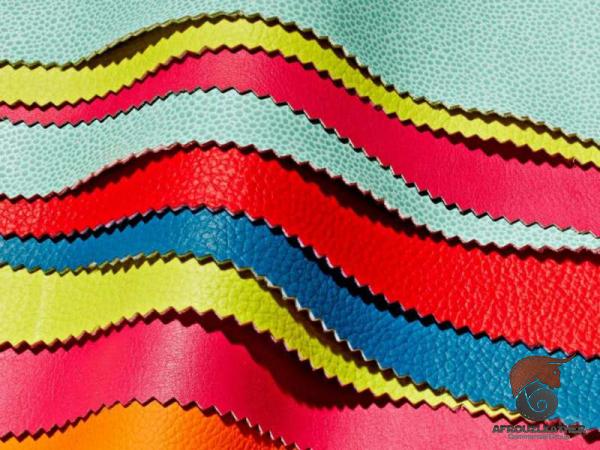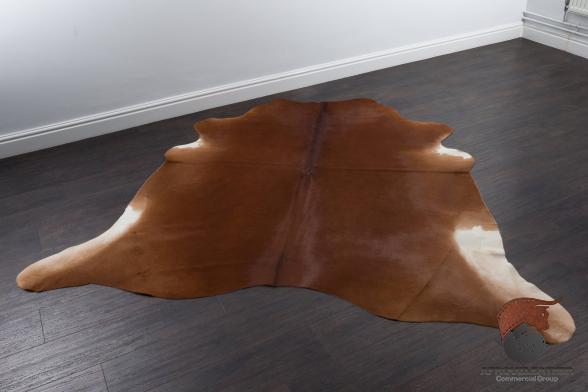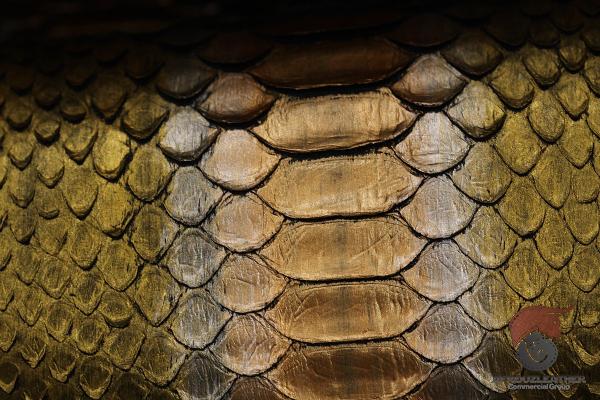Leather has been a highly sought-after material for centuries, with its unique properties making it suitable for various applications, ranging from fashion to furniture. However, concerns about animal welfare, environmental impact, and sustainability have given rise to innovative alternatives known as “fake leather” or “synthetic leather.” This article provides an overview of fake leather materials, exploring their composition, production processes, advantages, and challenges. 1. Understanding Fake Leather: Fake leather, also known as faux leather, vegan leather, or pleather, is a man-made material designed to imitate the appearance and properties of genuine animal-based leather. It offers an alternative to traditional leather by using synthetic or plant-based materials. 2. Composition and Production Methods: a) Polyvinyl chloride (PVC): PVC-based fake leather is commonly used due to its durability, flexibility, and cost-effectiveness. It comprises a fabric backing coated with PVC, which provides texture and appearance similar to leather. b) Polyurethane (PU): PU leather is another popular alternative that mimics the look and feel of authentic leather.
leather
 It consists of a fabric base coated with PU, offering better breathability and a softer texture compared to PVC-based faux leather. c) Bio-based or plant-based materials: With growing focus on sustainability, fake leather can now be produced using bio-based materials such as those derived from pineapple, mushrooms, cork, and even wine waste. These eco-friendly alternatives aim to reduce the environmental impact associated with traditional leather production. 3. Advantages of Fake Leather: a) Animal welfare: One of the primary advantages of fake leather is its avoidance of animal-derived materials, making it a cruelty-free alternative favored by vegans, animal rights activists, and consumers concerned about ethical sourcing. b) Cost-effectiveness: Synthetic leather is often more affordable than genuine leather, making fashion and furniture goods more accessible to a broader demographic. c) Customizability: Fake leather offers greater versatility in terms of color, texture, and design. Manufacturers can create an extensive range of finishes and patterns to suit various consumer preferences.
It consists of a fabric base coated with PU, offering better breathability and a softer texture compared to PVC-based faux leather. c) Bio-based or plant-based materials: With growing focus on sustainability, fake leather can now be produced using bio-based materials such as those derived from pineapple, mushrooms, cork, and even wine waste. These eco-friendly alternatives aim to reduce the environmental impact associated with traditional leather production. 3. Advantages of Fake Leather: a) Animal welfare: One of the primary advantages of fake leather is its avoidance of animal-derived materials, making it a cruelty-free alternative favored by vegans, animal rights activists, and consumers concerned about ethical sourcing. b) Cost-effectiveness: Synthetic leather is often more affordable than genuine leather, making fashion and furniture goods more accessible to a broader demographic. c) Customizability: Fake leather offers greater versatility in terms of color, texture, and design. Manufacturers can create an extensive range of finishes and patterns to suit various consumer preferences.
Specifications of leather
 d) Durability and easy maintenance: Synthetic leather tends to be more resistant to wear and tear than genuine leather. It is typically easier to clean and maintain, requiring less specialized care. e) Environmental impact: Compared to traditional leather production, faux leather has a lower carbon footprint and reduced ecological impact. The use of plant-based or recycled materials further enhances its sustainability profile. 4. Challenges and Concerns: a) Durability and longevity: While fake leather can be durable, it may not possess the same long-term resilience as genuine leather. It can crack, peel, or fade under certain conditions, requiring careful maintenance and storage. b) Breathability and comfort: Synthetic materials may lack the breathability and natural comfort associated with real leather, potentially leading to discomfort or excessive sweating when used in certain applications such as footwear. c) Environmental impact of synthetic materials: Despite synthetic leather’s reduced environmental impact compared to traditional leather, the production and disposal of PVC-based fake leather can still release toxic chemicals and contribute to microplastic pollution. d) Debates around plastic-based materials: The use of PVC and PU in fake leather raises concerns about the environmental consequences of plastic production, including the use of non-renewable fossil fuels and difficulties with end-of-life disposal. 5. Applications of Fake Leather: a) Fashion industry: The fashion industry has embraced fake leather as a versatile and cruelty-free alternative for clothing, shoes, handbags, and accessories. Prominent brands are increasingly incorporating faux leather into their collections to meet changing consumer demands. b) Furniture and upholstery: Synthetic leather is commonly used for furniture upholstery due to its affordability, durability, and ease of maintenance. It allows for a wide range of design options, making it suitable for both residential and commercial settings.
d) Durability and easy maintenance: Synthetic leather tends to be more resistant to wear and tear than genuine leather. It is typically easier to clean and maintain, requiring less specialized care. e) Environmental impact: Compared to traditional leather production, faux leather has a lower carbon footprint and reduced ecological impact. The use of plant-based or recycled materials further enhances its sustainability profile. 4. Challenges and Concerns: a) Durability and longevity: While fake leather can be durable, it may not possess the same long-term resilience as genuine leather. It can crack, peel, or fade under certain conditions, requiring careful maintenance and storage. b) Breathability and comfort: Synthetic materials may lack the breathability and natural comfort associated with real leather, potentially leading to discomfort or excessive sweating when used in certain applications such as footwear. c) Environmental impact of synthetic materials: Despite synthetic leather’s reduced environmental impact compared to traditional leather, the production and disposal of PVC-based fake leather can still release toxic chemicals and contribute to microplastic pollution. d) Debates around plastic-based materials: The use of PVC and PU in fake leather raises concerns about the environmental consequences of plastic production, including the use of non-renewable fossil fuels and difficulties with end-of-life disposal. 5. Applications of Fake Leather: a) Fashion industry: The fashion industry has embraced fake leather as a versatile and cruelty-free alternative for clothing, shoes, handbags, and accessories. Prominent brands are increasingly incorporating faux leather into their collections to meet changing consumer demands. b) Furniture and upholstery: Synthetic leather is commonly used for furniture upholstery due to its affordability, durability, and ease of maintenance. It allows for a wide range of design options, making it suitable for both residential and commercial settings.
buy leather
 c) Automotive industry: Faux leather is frequently utilized in car interiors, offering an alternative to genuine leather that retains the upscale feel while being cost-effective and easier to clean. 6. Consumer Perception and Future Outlook: Consumer attitudes towards fake leather have evolved significantly over the years. As demand for sustainable and cruelty-free products continues to rise, the acceptance and popularity of synthetic leather are expected to grow further. a) Innovations in materials: Ongoing research and development efforts are focused on creating high-performance bio-based materials that closely resemble genuine leather, aiming to address concerns surrounding synthetic materials and their environmental impact. b) Education and transparency: To foster wider adoption, manufacturers and brands need to be transparent about the materials used in their faux leather products. Educating consumers about the benefits and limitations of fake leather will contribute to more informed purchasing decisions. Conclusion: Fake leather has emerged as a viable alternative to traditional animal-based leather, offering a range of benefits such as reduced environmental impact, cost-effectiveness, and avoidance of animal cruelty. While challenges remain, ongoing developments in synthetic and plant-based materials indicate a promising future for the continued evolution of faux leather. As consumer demand for sustainable and ethically sourced products grows, the market for fake leather is likely to expand, creating opportunities for further innovation in the industry.
c) Automotive industry: Faux leather is frequently utilized in car interiors, offering an alternative to genuine leather that retains the upscale feel while being cost-effective and easier to clean. 6. Consumer Perception and Future Outlook: Consumer attitudes towards fake leather have evolved significantly over the years. As demand for sustainable and cruelty-free products continues to rise, the acceptance and popularity of synthetic leather are expected to grow further. a) Innovations in materials: Ongoing research and development efforts are focused on creating high-performance bio-based materials that closely resemble genuine leather, aiming to address concerns surrounding synthetic materials and their environmental impact. b) Education and transparency: To foster wider adoption, manufacturers and brands need to be transparent about the materials used in their faux leather products. Educating consumers about the benefits and limitations of fake leather will contribute to more informed purchasing decisions. Conclusion: Fake leather has emerged as a viable alternative to traditional animal-based leather, offering a range of benefits such as reduced environmental impact, cost-effectiveness, and avoidance of animal cruelty. While challenges remain, ongoing developments in synthetic and plant-based materials indicate a promising future for the continued evolution of faux leather. As consumer demand for sustainable and ethically sourced products grows, the market for fake leather is likely to expand, creating opportunities for further innovation in the industry.

Your comment submitted.